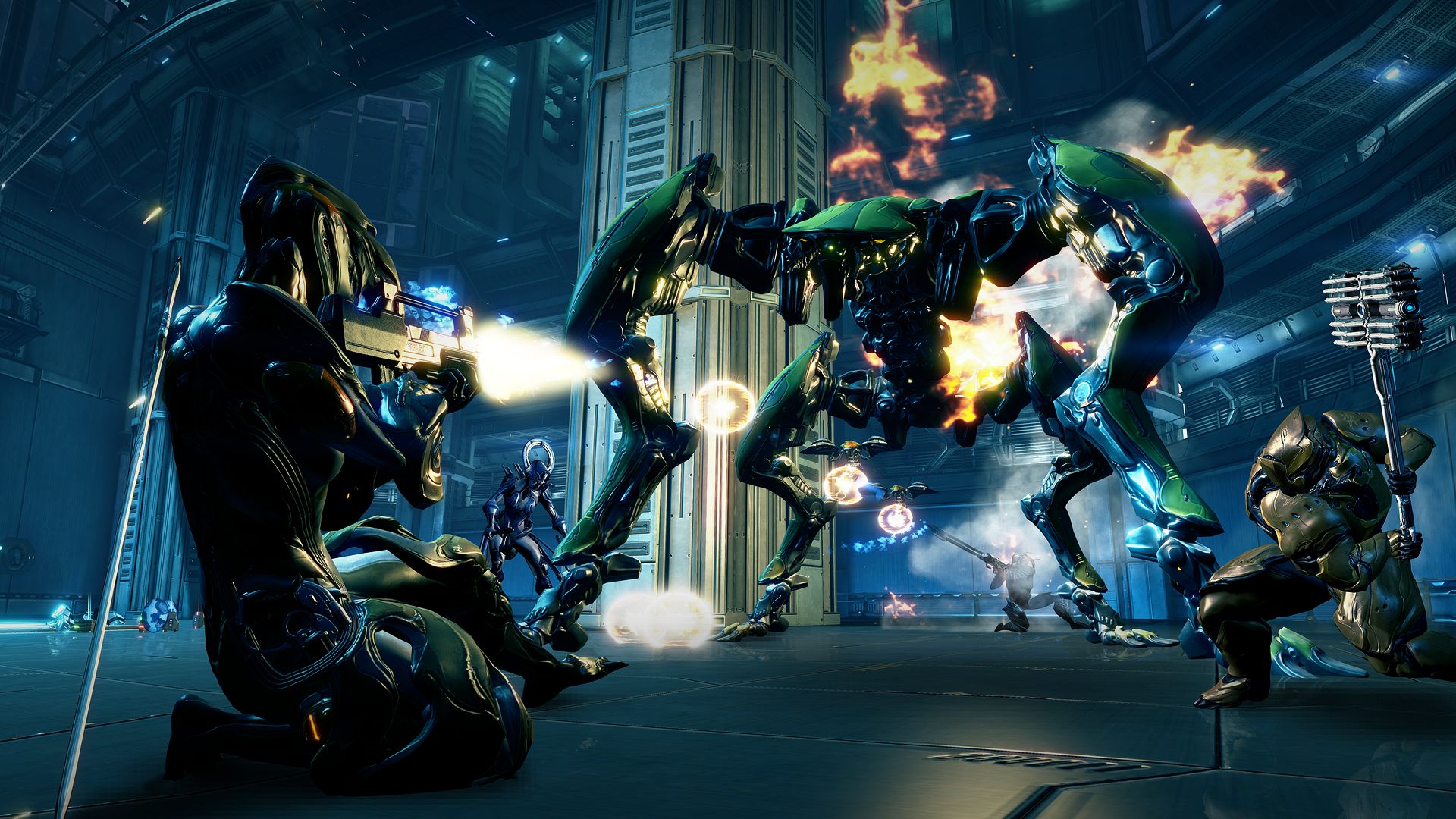Our Verdict
Warframe's daunting complexity doesn't detract from its delicious combat and flexible progression.
PC Gamer's got your back
We never reviewed Warframe when it first launched in 2013. But given how much it has changed and how popular it has become, we figured we'd fix that during our re-review week.
What is it? A co-operative loot shooter with space ninjas
Reviewed On: Windows 10, i5 3570k, 16GB Ram, GTX 970
Price: Free to play
Release Date: Out now
Publisher: Digital Extremes
Developer: Digital Extremes
Multiplayer: Four-player co-op, some MMO elements
Link: Official Website
Warframe is the most Frankenstein-esque game I have ever played. In 2013, it was little more than a procedurally generated loot shooter, but Digital Extremes has grafted dozens of features onto that root system since then. Space and underwater combat, an open world zone, PVP battles, customizable clan housing, public space stations, tameable pets… the list goes on. Warframe's growth doesn't resemble a well-tended plant—it's more like a mutant science experiment. Game systems are haphazardly stitched onto one other in ways that are sometimes incoherent, but oddly charming all the same.
Comparisons between Warframe and Destiny aren't unfair. Like Bungie's pseudo-MMO, Warframe is a co-operative RPG shooter set in a grim far-future version of our solar system. That's about where the similarities end. Unlike most RPGs, Warframe doesn't focus on vertical progression where I keep leveling up to become more powerful. Instead, it's almost akin to a sandbox game where I set my own objectives. Do I want to collect every warframe and weapon, or do I want to focus on making one or two obscenely powerful? Do I want to tackle the hardest missions or invest my time finding the best cosmetic gear? Each is a uniquely rewarding pursuit with its own appeal.
I know kung-fu
As a Tenno, I belong to an ancient order of space ninjas that have been reawakened from cryosleep to bring balance and peace back to the solar system. Tenno like me are in short supply, especially considering the Grineer, Corpus, and Infested factions I battle against have a seemingly endless reserve of troops. To balance the odds, Tenno use suits of indomitable armor called warframes, each with their own abilities and playstyle. But all warframes share two things in common: impossible agility and a staggering amount of customization.
When fighting through missions on each planet, how well I move is often just as important as how well I shoot. Momentum is everything, and staying still is a quick trip to the grave. Thankfully there's no shortage of movement options. Warframe's parkour system makes The Matrix look like a high school theatre production. warframes can slide, roll, and leap through the air with impossible agility.
It's thrilling to clear large chasms in a single bound or rip past enemies while racing against some timed objective.
It's brilliant how these moves chain together. Similar to a skateboarding game, ground slides can be comboed into forward bullet jumps into dodge rolls into more ground slides. In the right hands, even Warframe's lengthiest maps can be traversed in seconds. All of that takes some getting used to and it's frustrating when I get stuck in the environment. For example, ledges frequently have just enough of a lip that if I'm below a platform and I try to jump up past it, I'll end up just getting stuck just beneath the lip. Generally speaking, though, Warframe's rapid movement is to its benefit. It's thrilling to clear large chasms in a single bound or rip past enemies while racing against some timed objective.
While flying through the air, I can aim and trigger a localized bullet-time effect for more accurate shots, or I can eviscerate enemies with my melee weapons up close. Warframe's enemies aren't intelligent, but that doesn't really matter when they frequently outnumber me 20 to one. That isn't to say Warframe is easy—quite the opposite, actually. Enemies are individually dumb, but in groups they have layered abilities that can really spell trouble, like shield supplying Corpus drones or Ancient Disruptors that siphon your valuable energy.
Warframe lacks a linear central campaign, but most of my time has been spent unlocking new planets on the star chart. Each planet has a web of missions that need to be completed in succession—along with some secondary objectives—to unlock new planets, tougher missions, and more valuable crafting resources.
It's a good thing that I'm moving so fast, or I'd be bored by Warframe's levels. It's not that they aren't pretty (some of the otherworldly vistas are suitably stunning), but they're just so repetitive. Missions are randomly generated corridors with aesthetics that match the planet I'm on, but they all look the same after awhile. It's a bit of a shame that a solar system spanning adventure is largely confined to claustrophobic corridors.
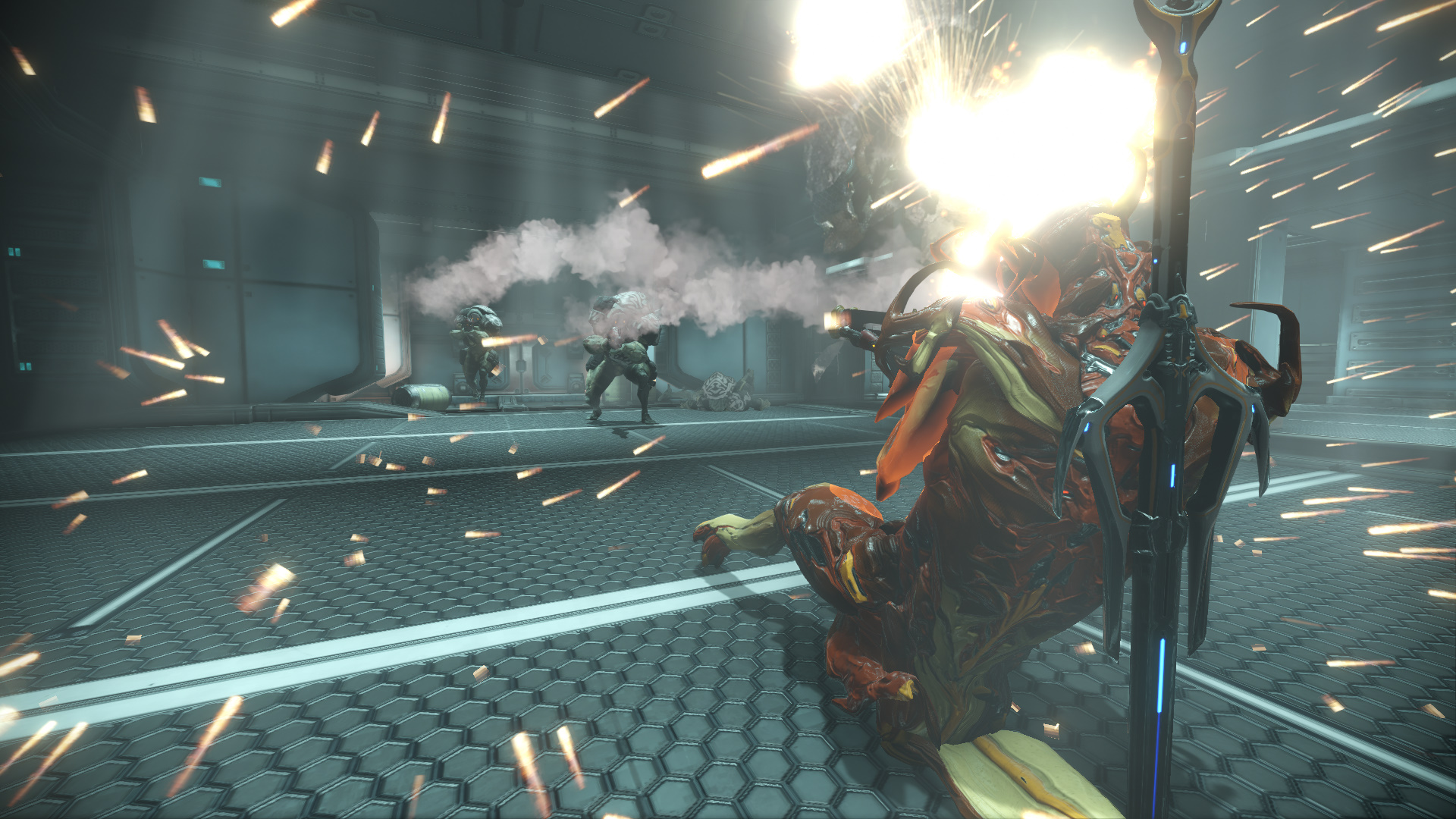
Killing machines
That problem does not exist with combat. There are more than 50 warframes and well over 100 weapons, lending tons of diversity to character progression. Each warframe is like its own RPG class, complete with four unique abilities. Mag, for example, can crush hordes of enemies using her magnetic powers. Nekros, a necromancer-style frame, can revive dead enemies to fight for him. Hydroid can summon an area of kraken-like tentacles that crush and pin any enemies stupid enough to wander in. And those are just the more basic warframes. Octavia, for example, has an instrument that buffs allies and doubles as an actual in-game synthesizer for players to make their own tunes on. Equinox is actually two warframes in one, switching between night and day modes that have entirely different abilities.
Weapons aren't nearly as unique, but there are so many different types that it's still fun to try them all. There's the usual fair like assault rifles, shotguns, and swords, and then there's the wackier types like the Arca Plasmor, which fires bubbles of radiation, or the Redeemer, a blade that also doubles as a gun.
Crafting these weapons and frames is the other side of the Warframe coin, and it's where I started bumping into Warframe's daunting grind. Frames are probably the most arduous because their blueprints usually only drop from a planet's boss. To get all three component blueprints, you'll have to run a boss at least three times—but often many, many more.
Killing the same boss over and over just isn't that fun.
Equinox, for example, requires six blueprints from the same boss, and because these drops are random some players have to kill it upwards of 30 times. Farming resources isn't so bad because you're collecting them no matter what you're doing, but specifically killing the same boss over and over just isn't that fun—especially when there's no way to skip right to the boss fight. As a new player, this also ruins some of the dramatic tension surrounding these climactic boss fights unless you do them solo. You'll usually be paired with a farm group that blitzes through the level and kills the boss so fast you won't even get a chance to see its cutscene.
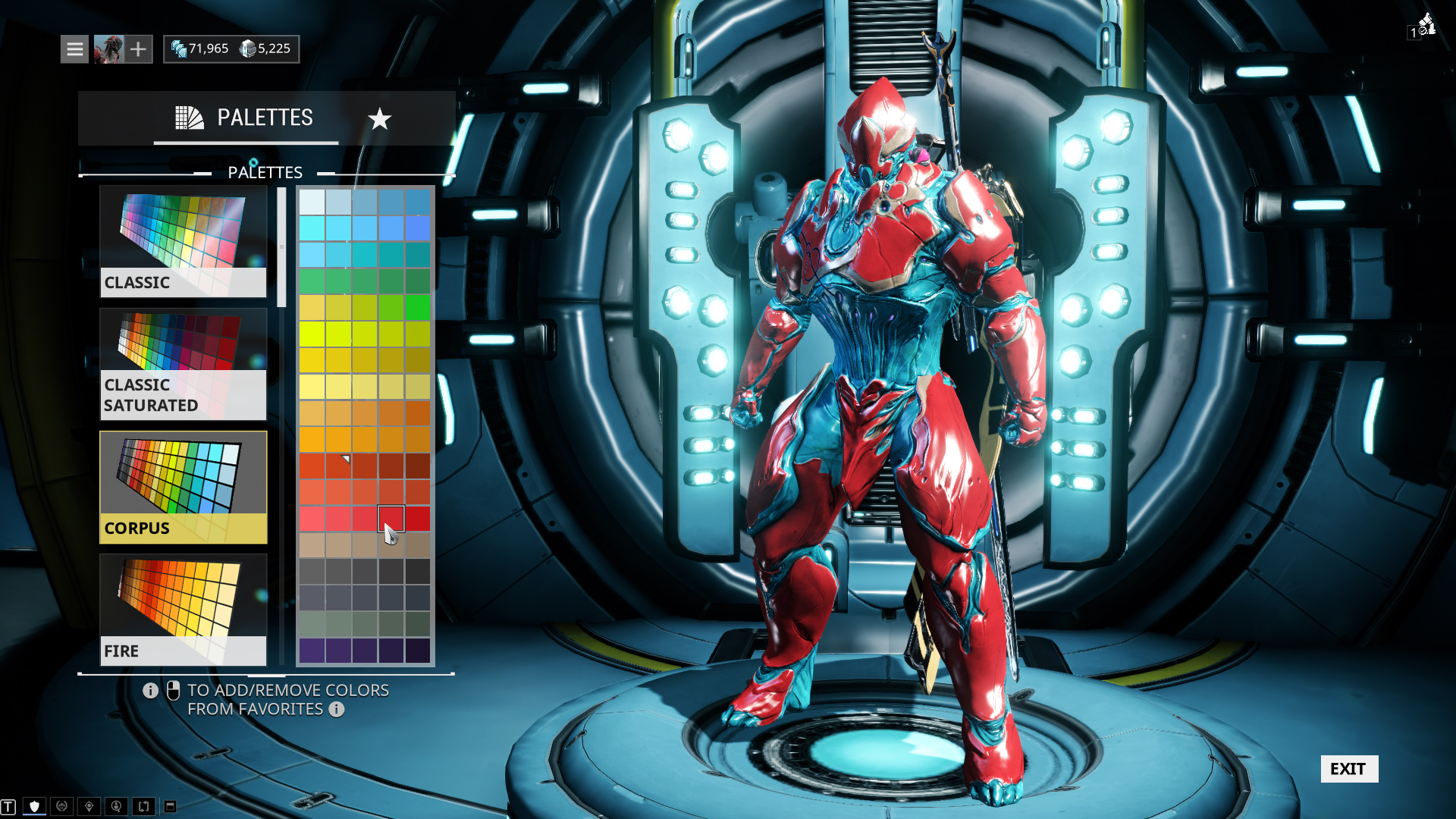
Resources and cash you earn from completing missions is funneled into blueprints to craft new items, but doing so also takes a certain amount of real time. Sometimes this is just a few minutes, but warframes take at least 84 hours to craft. It's annoying to have to wait for hours or days for items to gestate because new gear isn't immediately powerful, anyway.
There is no overarching level system in Warframe. Each warframe and weapon has its own level that increases as long as I have it equipped, so everything sucks at first. Leveling items increases its mod capacity, which allows you to slot in mods that empower and augment that item. Without them, any warframe or weapon is universally terrible. But with mods—especially the right mods—I can become a god of war so powerful I almost want to cackle madly as I cleave my way through missions.
There are easily around a thousand mods to find and use, and learning which ones work well together is an art in itself. Some are obvious picks with straight damage upgrades, while others might have one powerful buff but also a significant drawback that has to be accounted for. Each mod drains an item's mod capacity, but there's ways to further optimize a build.
Some rare items can double mod capacity, while 'Forma' resets an item to level one but adds a special mod slot that halves the drain of a mod that has a corresponding symbol. It's common for players to Forma an item several times to squeeze as much mod capacity out of it, requiring you to re-level that item as many times. Thankfully, re-leveling items isn't nearly as time consuming as it sounds. Specific missions are well-known for throwing so many enemies at you that with a full party and an hour to kill, you can easily powerlevel.
If that whole process sounds confusing, well, it is. And there's no avoiding it, either. Warframe is intense and convoluted, and there were evenings where I spent more time reading the wiki or watching video guides than actually playing the damn thing. And that goes for practically every system in Warframe. Even trading with other players required a guide. Now that I'm standing at the crest of Warframe's learning curve, however, the journey doesn't seem so bad. As daunting as it was, it's refreshing to play an MMO-style game that doesn't just imitate its peers.
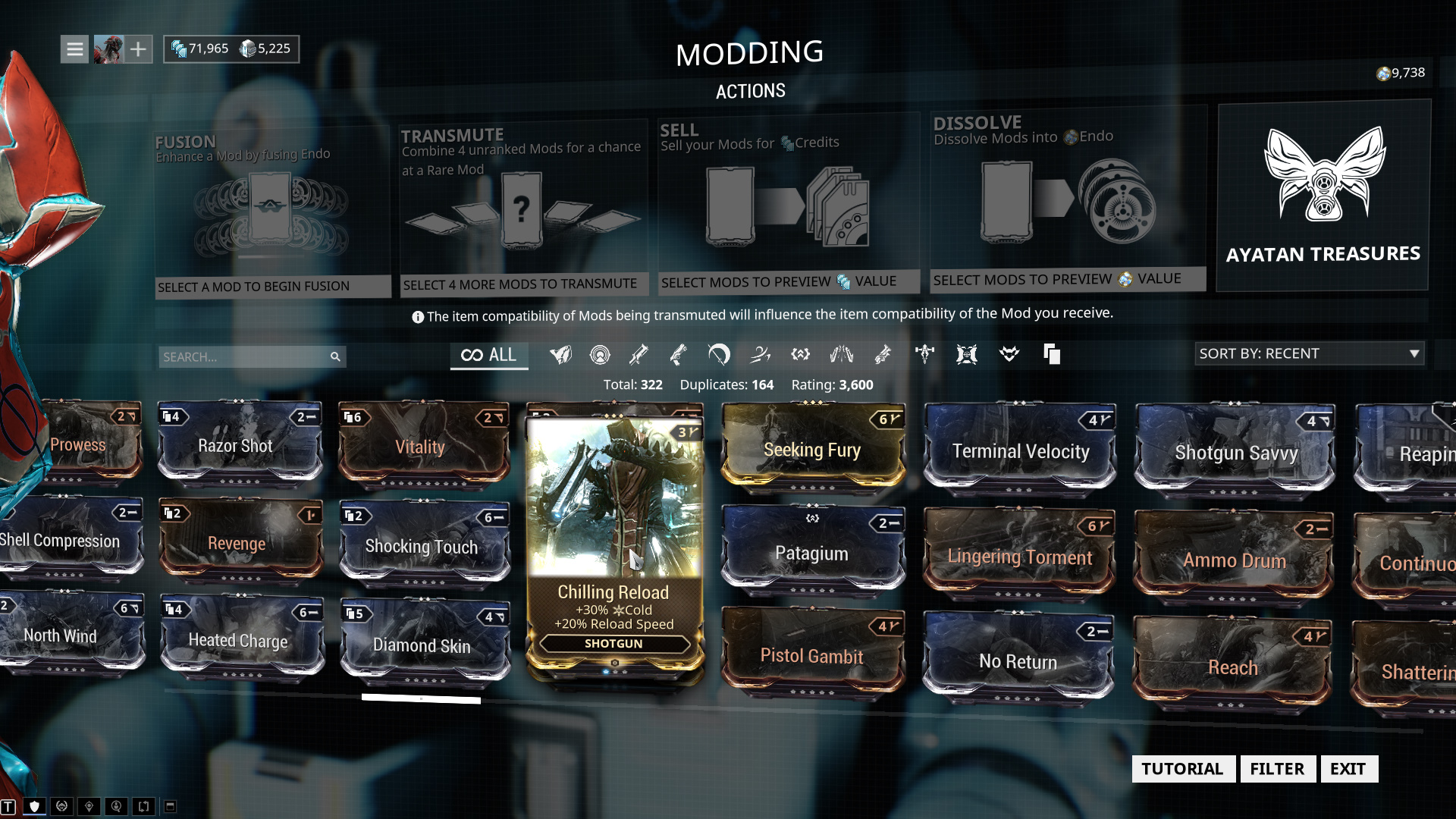
Take the mod system, for example. Practically any warframe and weapon can be viable for endgame missions based solely on the mods you've slotted into them. Instead of constantly cycling through progressively more powerful gear, like in most MMOs, I spend time lovingly shaping my arsenal into finely tuned weapons of mass destruction. I love that I have that kind of freedom instead of being shoehorned into certain best-in-class weapons and warframes. And because of that, I'm more attached to each of my warframes than any of Destiny's exotic gear.
While there isn't an overarching level system, there are Mastery Ranks, which you earn by leveling new gear. Each rank unlocks new story quests, weapons, and frames but doesn't impact your power in any way. I love this system because it encourages me to experiment and level new gear to increase my Mastery Rank rather than just sticking with one playstyle. I'm constantly having to learn new strategies and techniques, and that keeps Warframe fun.
Warframe's grind doesn't feel needless and arbitrary to me like it does in other MMOs.
The drawback is that this is just one more grind on top of Warframe's mountain of grinds, which itself is located in a continent-spanning mountain range of grind. The Rocky Mountains of grinds, if you will. But, aside from having to wait for items to craft, Warframe's grind doesn't feel needless and arbitrary to me like it does in other MMOs. Sure, I might be farming the same missions dozens of times looking for rare mods, but the key difference is that playing Warframe is just old fashioned fun.
I'm not mindlessly mashing the attack button while watching Netflix on a second screen. It's not a chore, because I'm enjoying myself. And because that grind leads to new warframes and weapons that offer vastly different playstyles instead of just clicking to make numbers on a character sheet go higher, it also feels more rewarding. As much as I hate waiting three days for a Warframe to build, It's also hard to resist not logging in first thing in the morning and taking it for a quick spin.
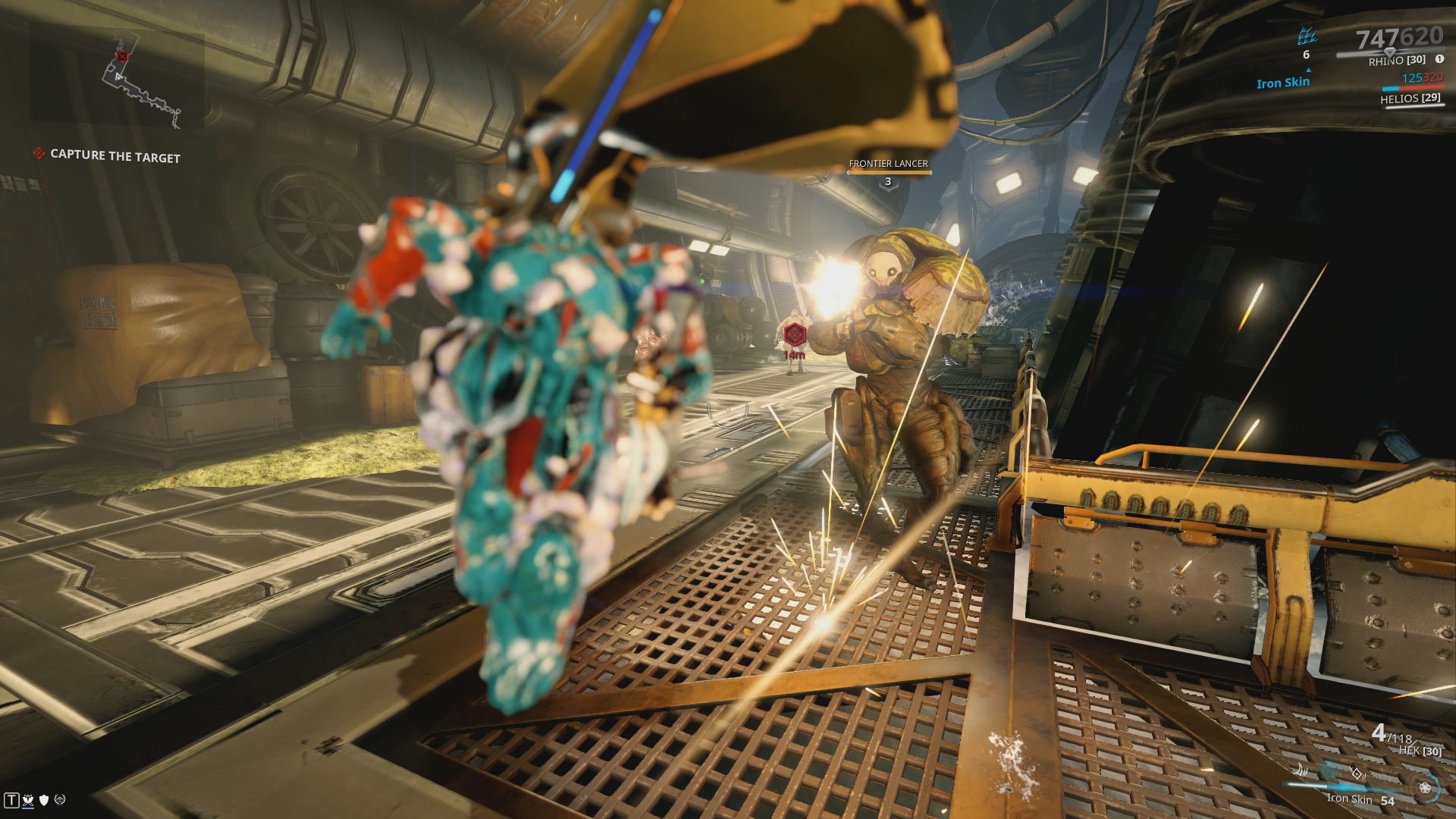
Merchants of death
What sucks is that not all of these progression systems in Warframe have been made with equal love and care. It's evident that in order to keep players interested Digital Extremes has to pump out updates at a steady pace, but some of these new features feel half-realized and even a little gimmicky. Archwings, for example, are a Gundam Wing-like suit that let your warframe fight in outer space, but they handle poorly and are barely used outside of a few mandatory missions. It feels pointless to spend time on them.
The Plains of Eidolon, an ambitious-as-hell open world zone Digital Extremes added last year, is impressive but feels too compartmentalized from the rest of the game. It's mostly just for veterans. The problem with these adiditions is that new players won't realize that their time is better spent elsewhere than grinding Archwing missions or doing repeatable missions on the Plains. When Warframe is already asking for countless hours to see and do everything, it's frustrating to feel like any of my time has been wasted unnecessarily. It's these bold deviations from Warframe's core formula that make it feel sprawling and sometimes incoherent, though I appreciate that Digital Extremes takes risks.
Thankfully, clever players can find a few ways to skip some of these grinds. Being a free-to-play game, you can throw money at Warframe and skip a few progression hurdles. Warframes and weapons can be bought outright instead of crafted, but mods only come in random lootboxes. You'll still need to level these things up before they're useful, though. And because Warframe is largely a cooperative game, I really don't care if someone bought their way to the top.
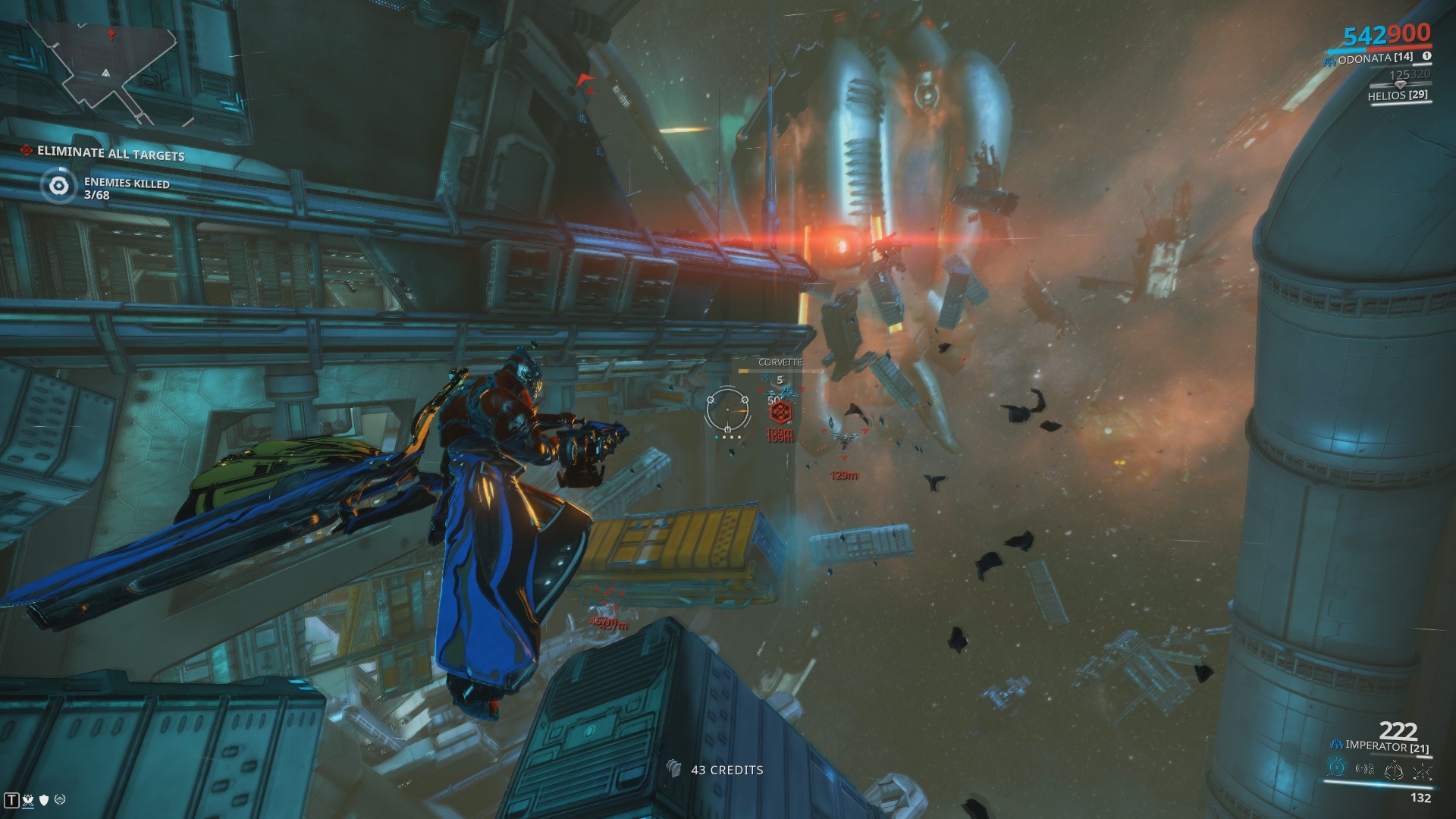
Warframe is extremely generous to non-paying players, and there are almost no arbitrary limitations enforced on what you can do without spending money.
Warframe is extremely generous to non-paying players, and there are almost no arbitrary limitations enforced on what you can do without spending money. But what is awesome is that platinum, the premium currency, is the de facto trading currency between players. I can sell items to others for platinum and buy anything from the premium cash store. Better yet, I can use my platinum to buy rare mods directly from other players and skip trying to farm them. Because of this, Warframe's trading economy is robust and active, and you don't have to spend real money to participate. I love visiting the bazaar to see what players are selling. It's one of the coolest things about Warframe.
It's those moments, when I'm taking a break from all the killing to visit one of the public space stations, that I feel really in tune with Warframe's world. I love seeing other players just chilling out. Though Warframe doesn't rub it in your face, there's a wealth of lore and story to unearth—especially once you get to more recent, ambitious story quests. I love interacting with some of the colorful NPCs like Cephalon Simaris, an AI hellbent on killing everything so he can steal its data and make it live eternally in a simulated reality called Sanctuary. Though it might not be truly massively multiplayer, Warframe has a lot of what I find endearing about MMOs. It's a sprawling world with stories to tell, people to meet, and loot to farm. It is daunting to learn, sure, but so was World of Warcraft the first time I logged in. And, honestly, it's exciting to feel lost again.
Warframe's daunting complexity doesn't detract from its delicious combat and flexible progression.
With over 7 years of experience with in-depth feature reporting, Steven's mission is to chronicle the fascinating ways that games intersect our lives. Whether it's colossal in-game wars in an MMO, or long-haul truckers who turn to games to protect them from the loneliness of the open road, Steven tries to unearth PC gaming's greatest untold stories. His love of PC gaming started extremely early. Without money to spend, he spent an entire day watching the progress bar on a 25mb download of the Heroes of Might and Magic 2 demo that he then played for at least a hundred hours. It was a good demo.
